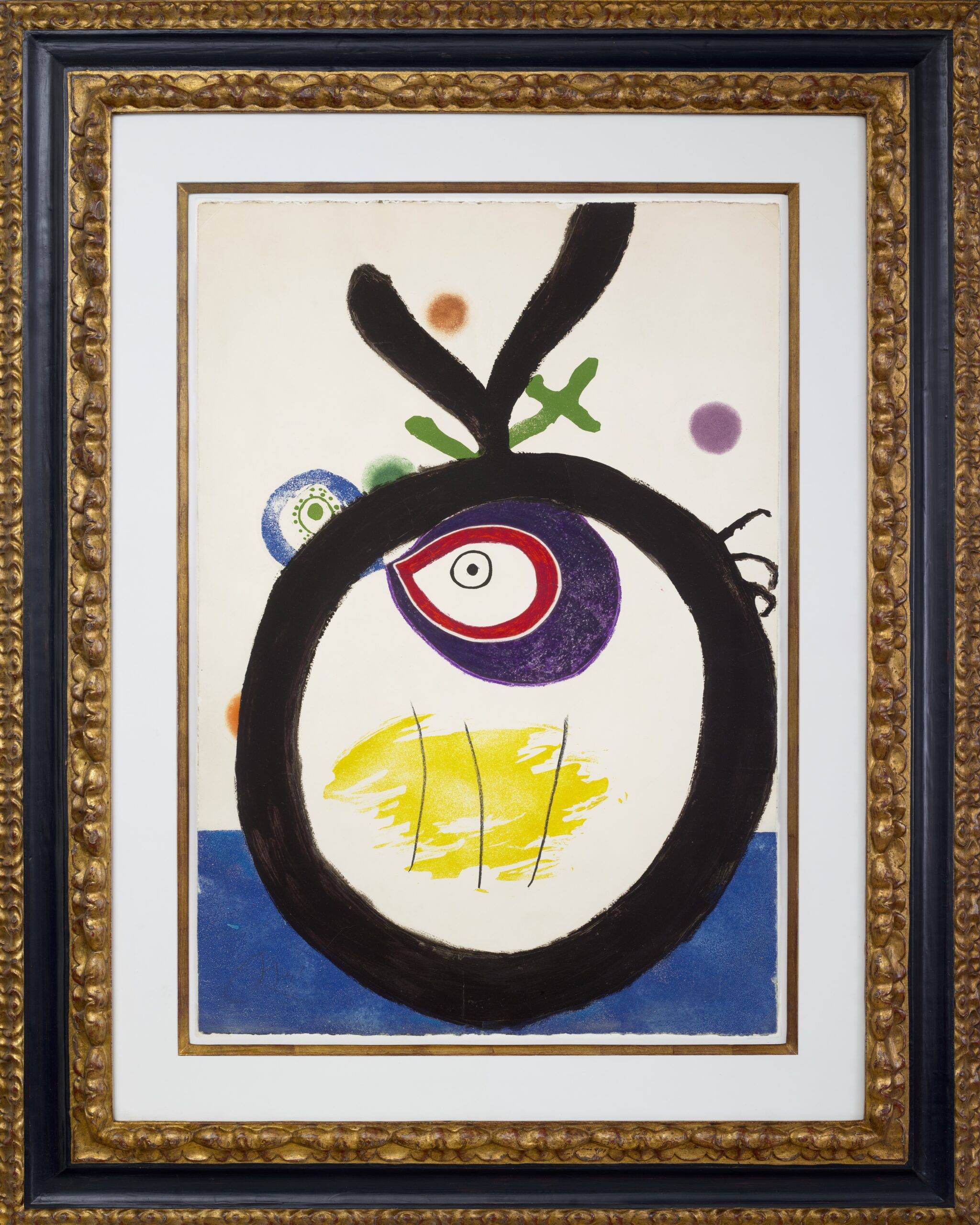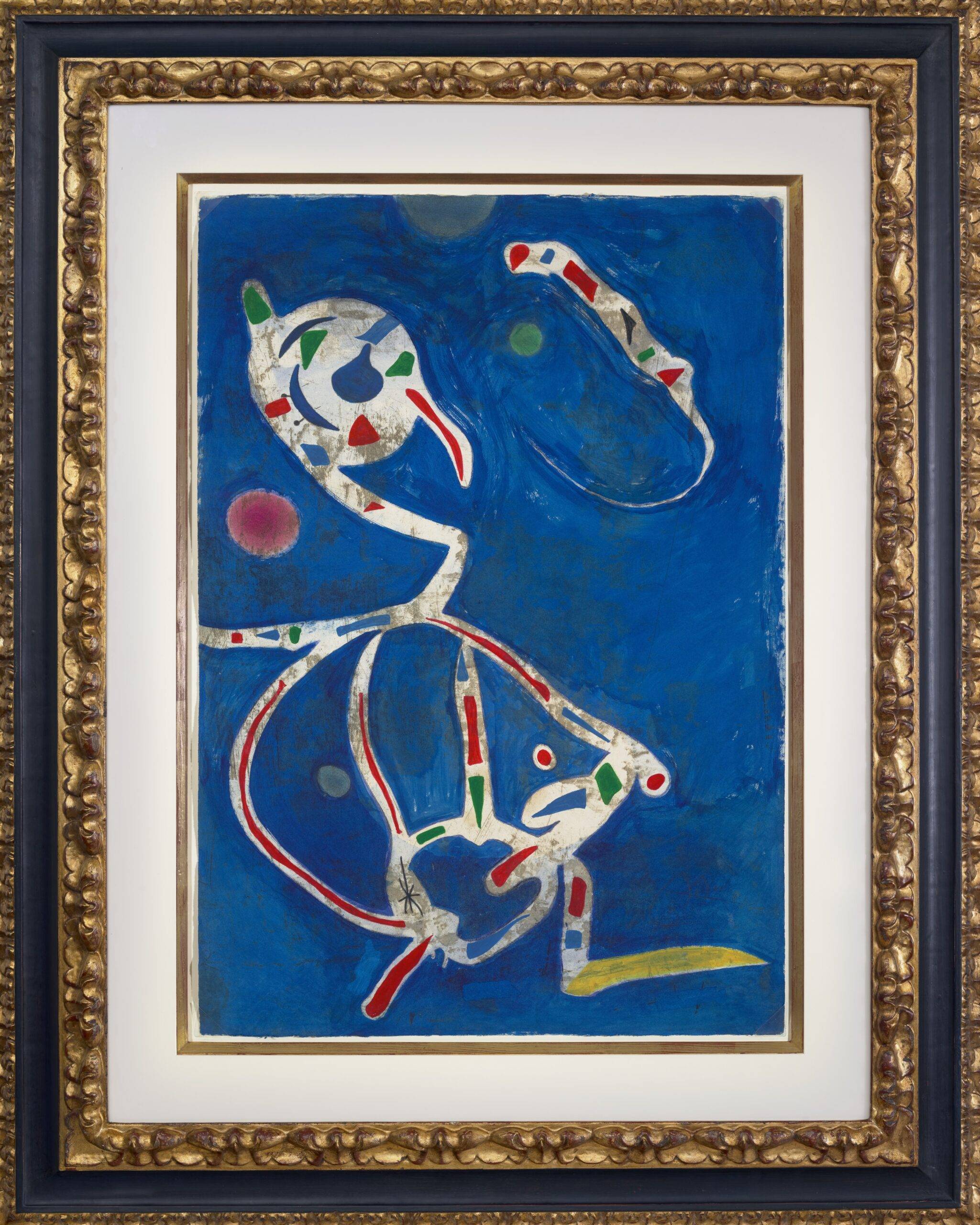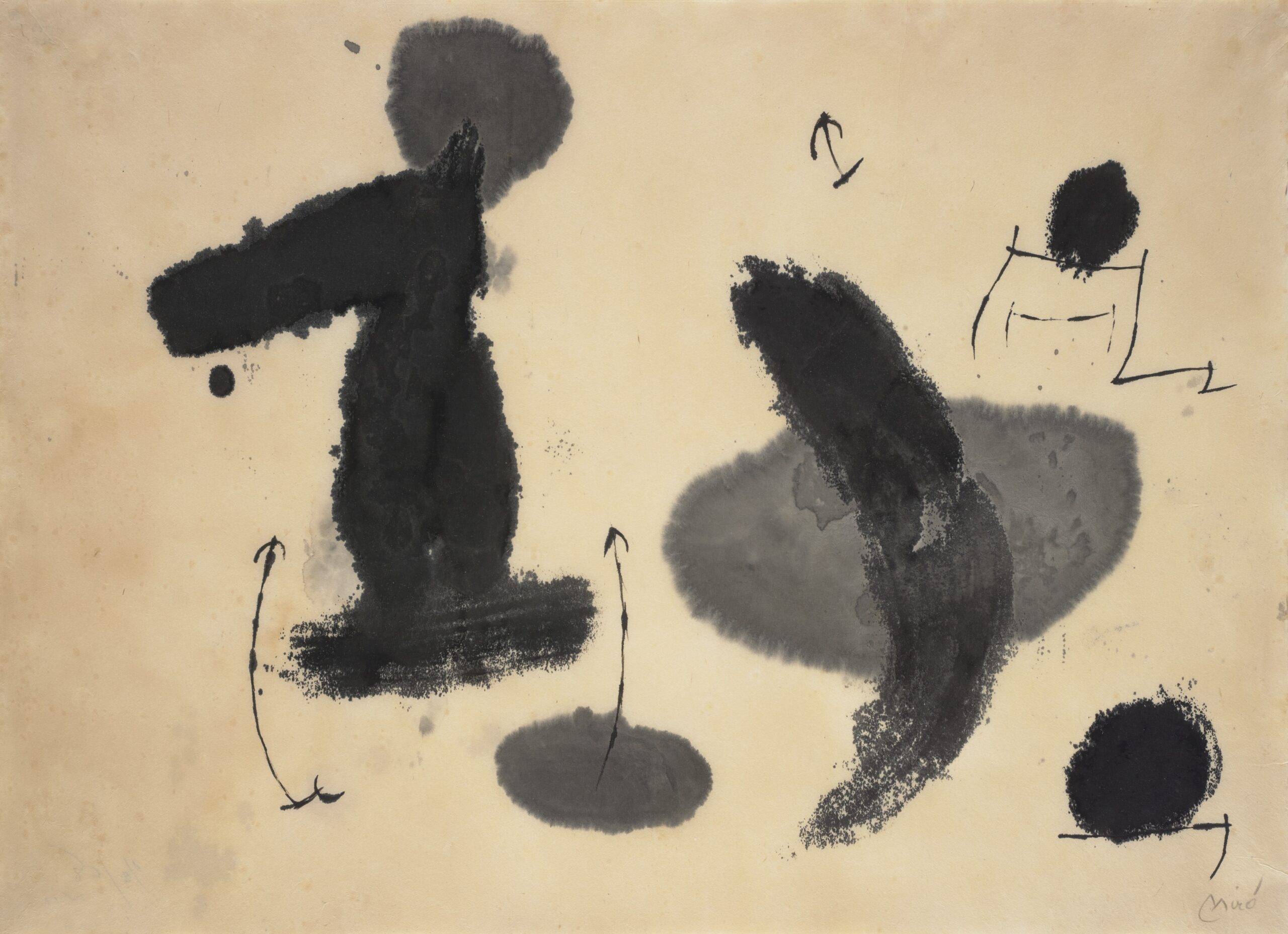Quatre colors aparienel mon
Joan Miró
Part of the Els Quatre Colors, this enigmatic work by Joan Miró captivates at first glance, drawing the viewer in where color becomes a language of its own.


Miró: Color and Defiance
Created in the 1960s, during a period of extraordinary artistic maturity, the series reflects Miró’s pursuit of purity and expression. In Spain, still under the shadow of Francoist repression, artistic freedom was constrained, and abstraction became a refuge and a subtle form of resistance. By reducing painting to essential forms, Miró forged a visual language that transcends time and place, inviting contemplation and imagination.
Influenced by Eastern calligraphy, primitive art, and cosmic symbolism, Miró elevates color itself to the role of protagonist. Each brushstroke and hue carries emotional and symbolic weight, making the series a landmark of modern art and a subtle act of poetic defiance.
Technical Specifications
- Dimensions: 92.5 cm x 65 cm (with frame 137 cm x 109 cm)
- Technique: black paint, gouache, wax crayons, and lithographic ink on cardboard paper
- Signed in the lower left corner
- Unique original work, prototype, model for an engraving
- Certified by Joan Barbera and Tristán Barbera
- Year: 1975

La Traca
Joan Miró
In La Traca, Joan Miró transforms the explosive energy of fireworks into a visual symphony. The lithographs in this series capture the frenetic movement and vivid colors of a celebration, inviting viewers to experience the thrill and unpredictability of fireworks through abstract forms and dynamic compositions.


Miró’s Fireworks: Art in a Time of Liberation
Created in 1979, La Traca emerged during a period of political and social transformation in Spain. Following the death of dictator Francisco Franco in 1975, the country was transitioning from decades of authoritarian rule to a constitutional monarchy and parliamentary democracy. This newfound freedom allowed artists like Miró to explore themes of liberation and renewal. The La Traca series reflects this spirit, with its vibrant colors and dynamic forms symbolizing the joy and vitality of a nation embracing change.
Artistically, La Traca showcases Miró’s mastery of etching and aquatint techniques. The series is characterized by bold lines, energetic compositions, and a vivid color palette, capturing the essence of fireworks in a way that is both abstract and expressive.
Technical Specifications
- Dimensions: Total 42.1 × 22 × 28 cm; Sculpture 32.1 × 22 × 28 cm; Base 10 × 16.8 × 16.7 cm
- Weight: Total 17.5 kg; Sculpture 9.7 kg
- Materials: Bronze, lost-wax casting, bronze paper clips, dark green patina; base in serpentine stone
- Edition: 4 Artist’s Proofs [EA I–IV/IV]; 6 examples [1/6–6/6], signed Dalí, foundry Gi.Bi.Esse Verona (1966–1968), supervised by Miguel Berrocal
- Markings: Signed and numbered [Dalí EA II/IV]; certificate by Nicolas Descharnes
- Provenance: Gi.Bi.Esse; Berrocal Collection; Estate of Berrocal; private collection (2023)
- Condition: EA IV/IV excellent; EA II/IV with bronze wire clips (no rust)
- Packaging: Museum crate 59 × 47 × 40 cm; tare 12 kg; gross 29.5 kg

Untitled VII
Joan Miró
Created in 1968, Untitled VII is part of Joan Miró’s series of works on paper collected in Drawings III (1960–1972). Executed in Indian ink, the piece exemplifies Miró’s instinctive and gestural approach to drawing, where spontaneity and controlled freedom merge to create a language that transcends literal representation.


From Line to Essence: Miró’s 1968 Drawings
Created in 1968, Untitled VII belongs to a series of drawings produced during a period of political repression in Spain under Franco’s regime and international cultural transformation. Miró’s works on paper from this decade reveal his personal vocabulary of signs and gestures, while also reflecting the broader spirit of change and renewal that characterized the era.
Executed primarily in Indian ink with additional materials, the drawing embodies Miró’s free, spontaneous approach, where line and gesture unfold without predetermined form. Untitled VII demonstrates how Miró distilled his language into essential elements, making these works on paper a key stage in the evolution of his artistic thought.
Technical Specifications
- Dimensions: 46 × 62 cm
- Technique: Indian ink and other media on paper
- Catalogue Reference: Drawings III (1960–1972)
- Provenance: Galerie Maeght, Paris; Private Collection

